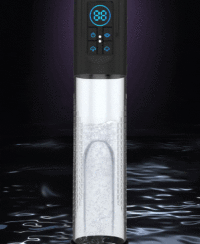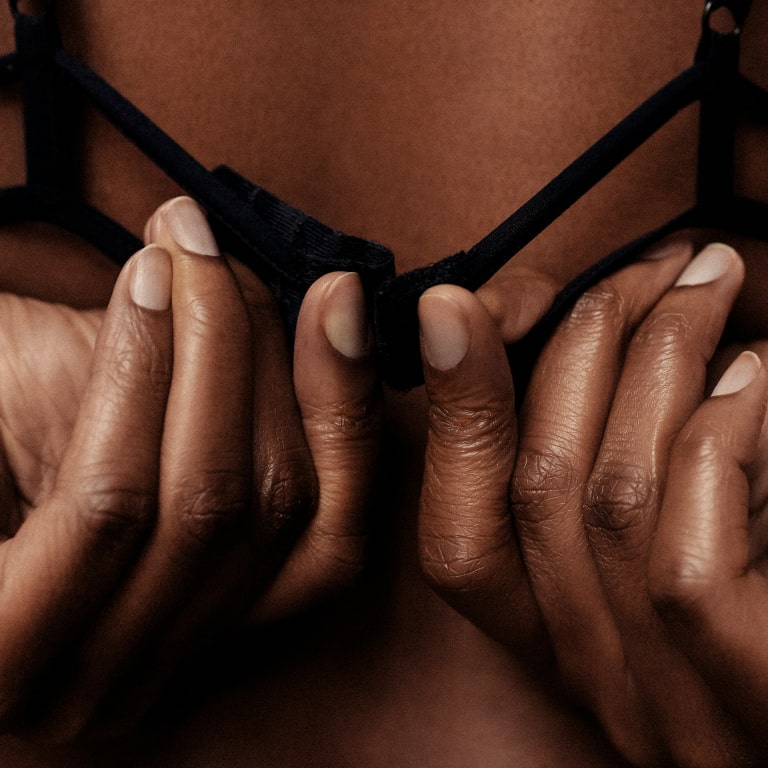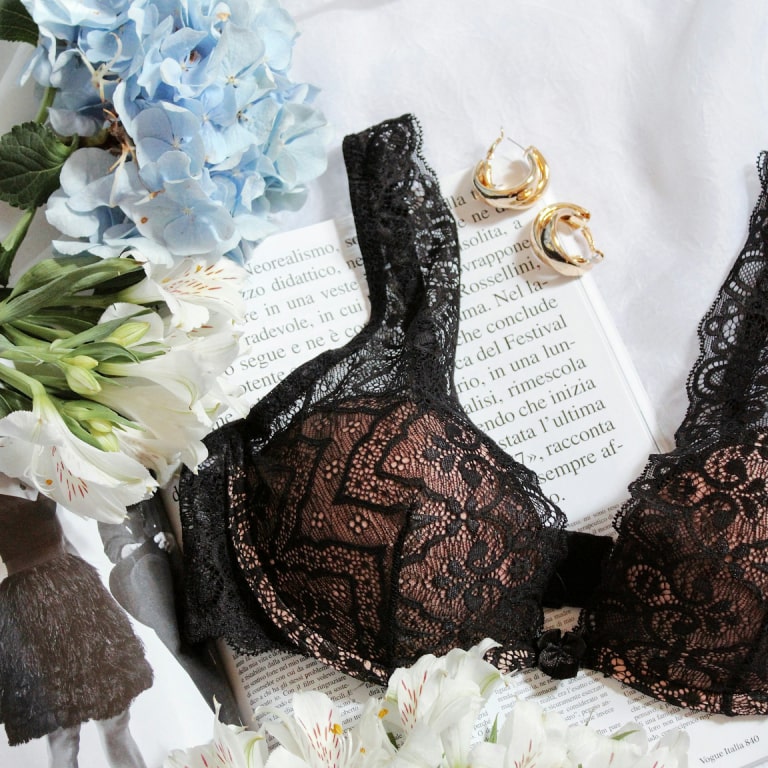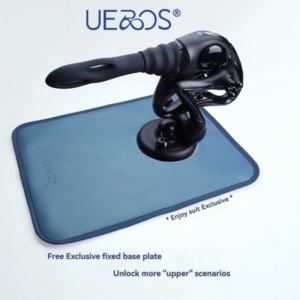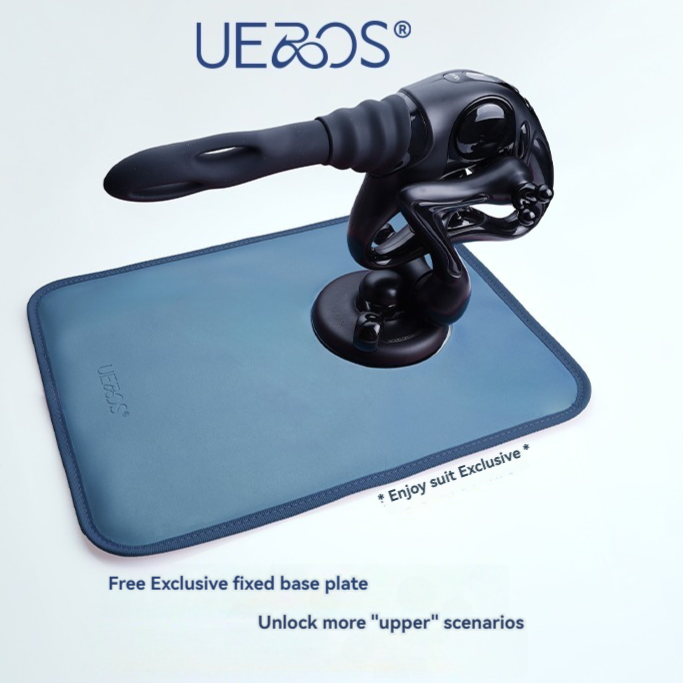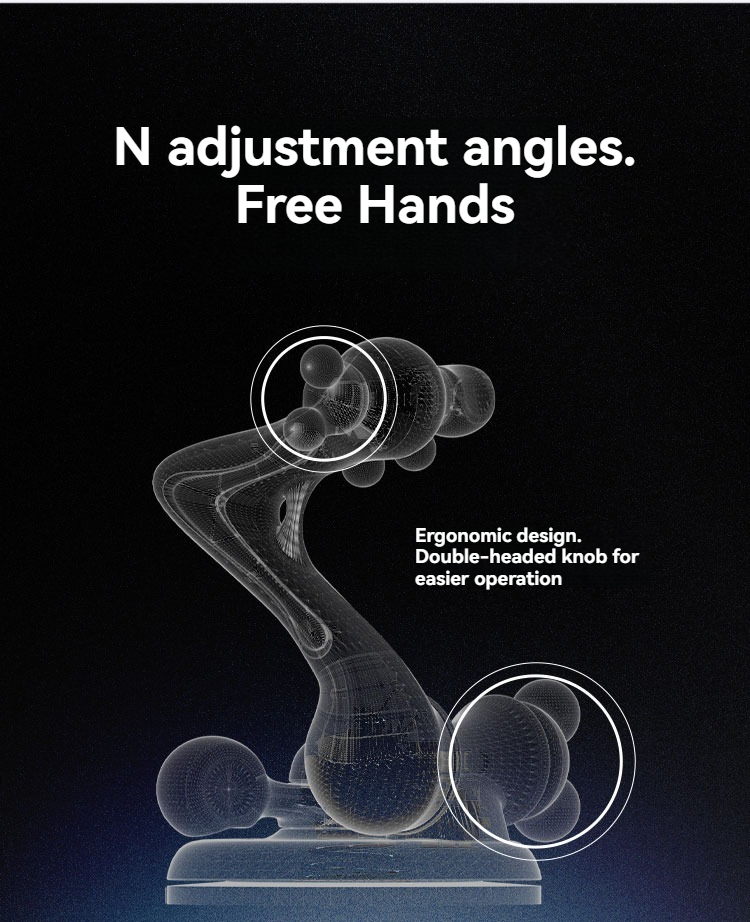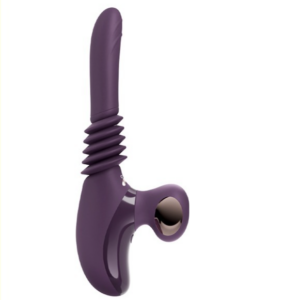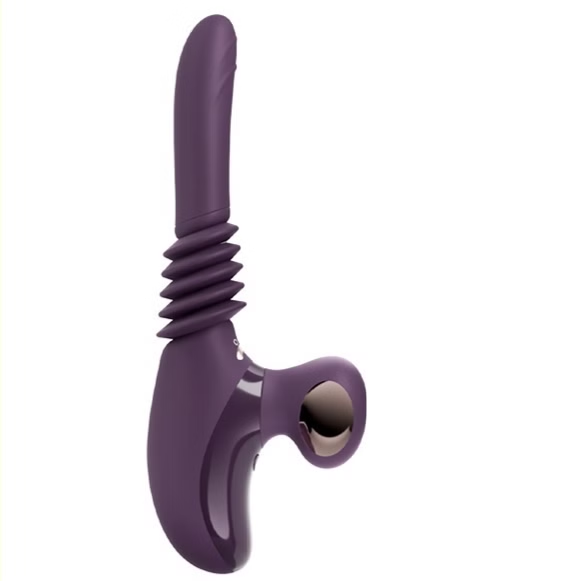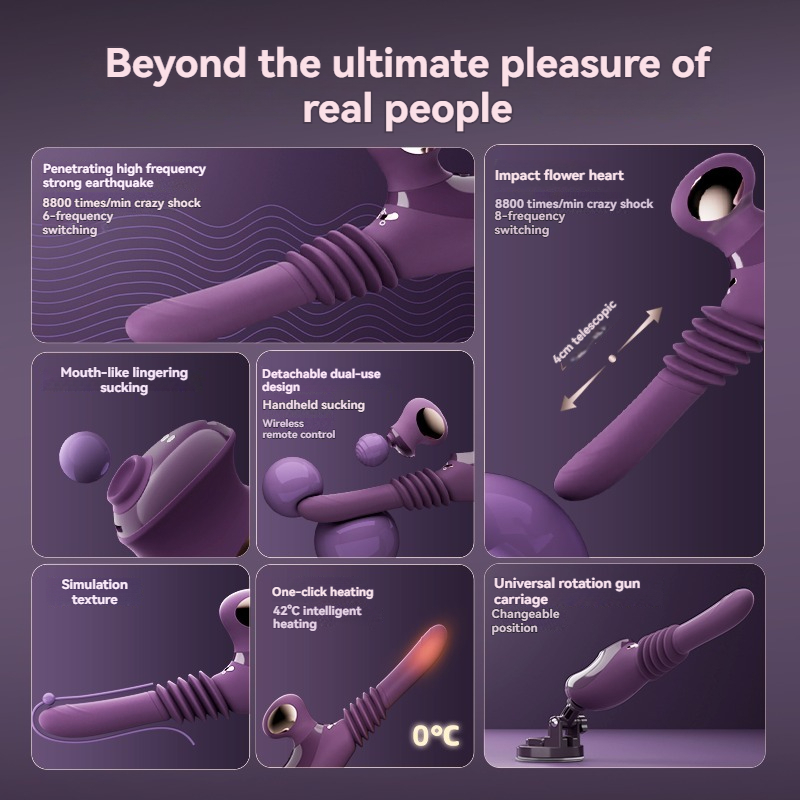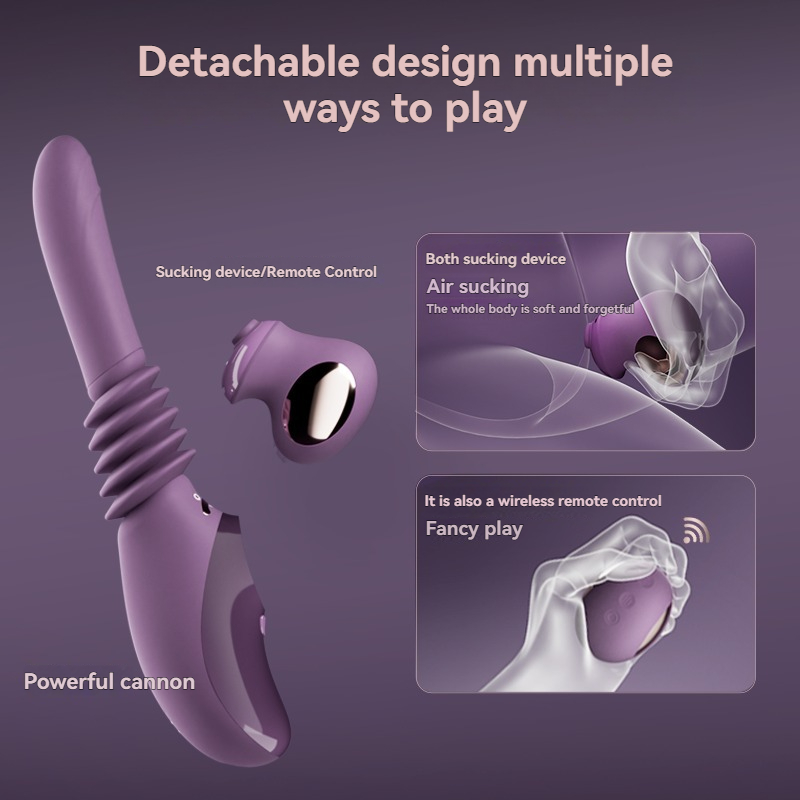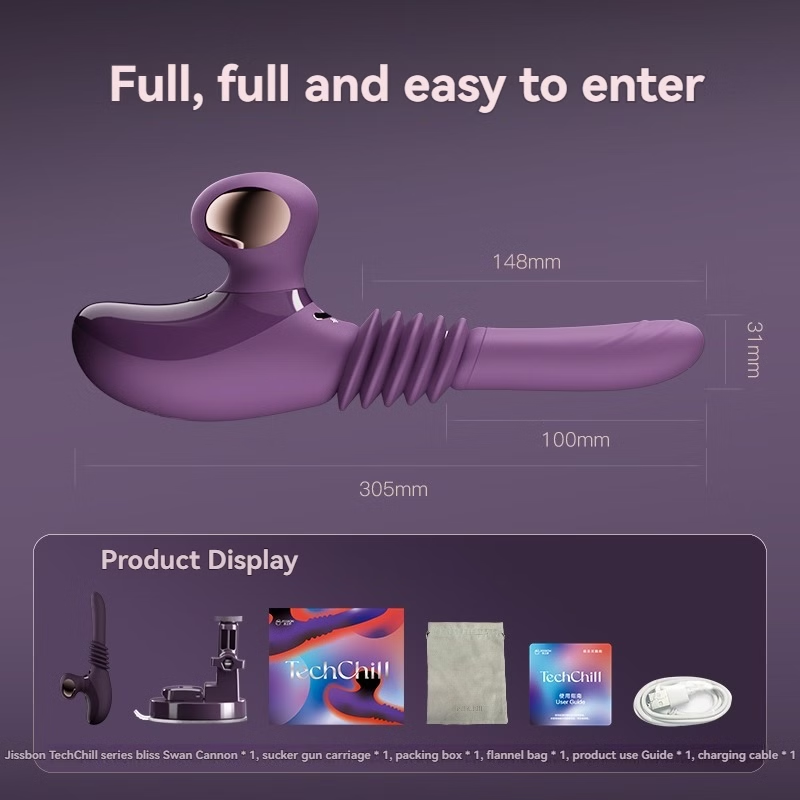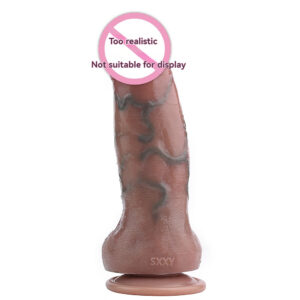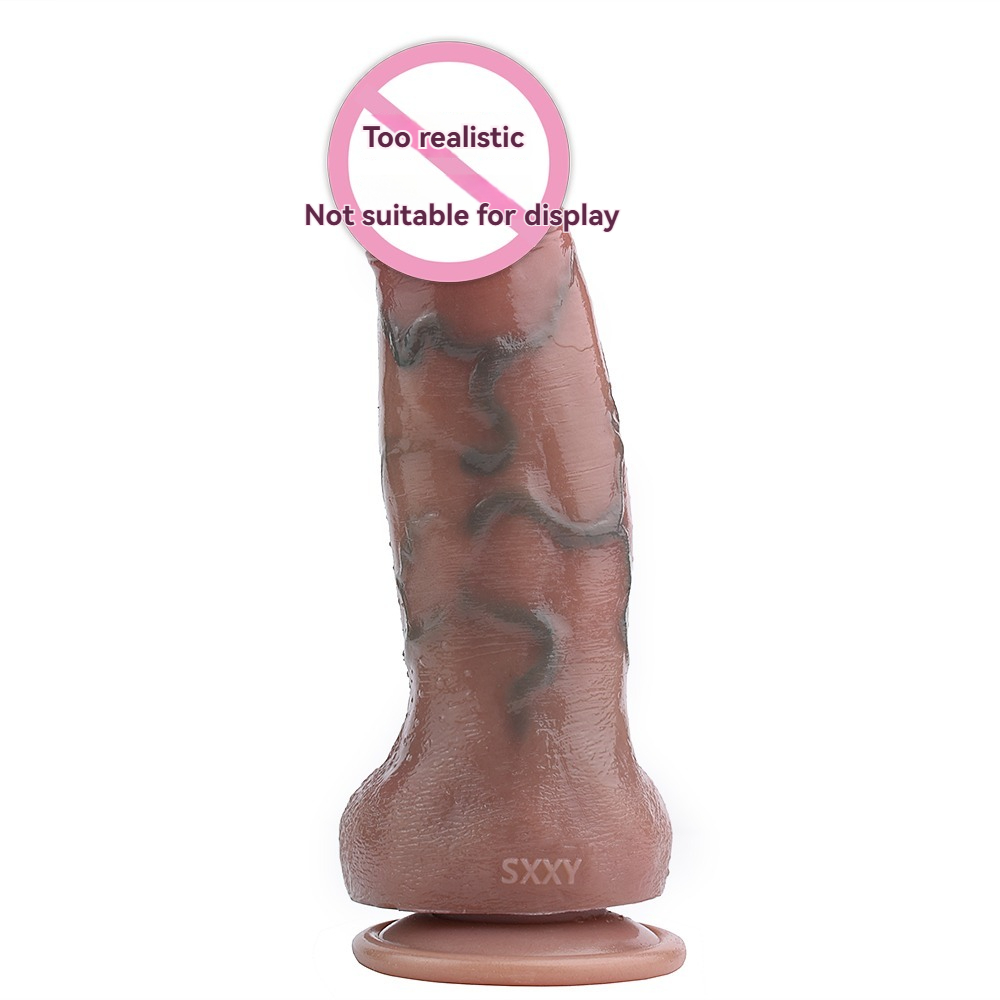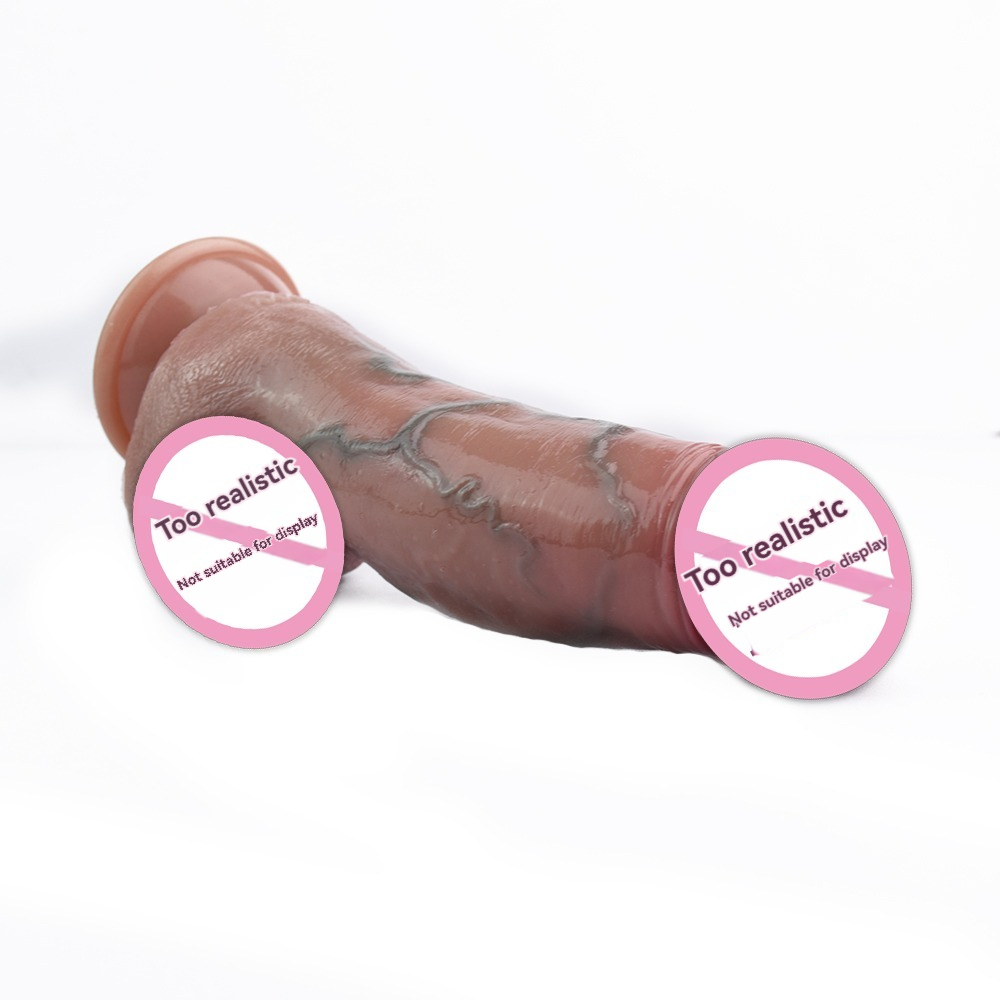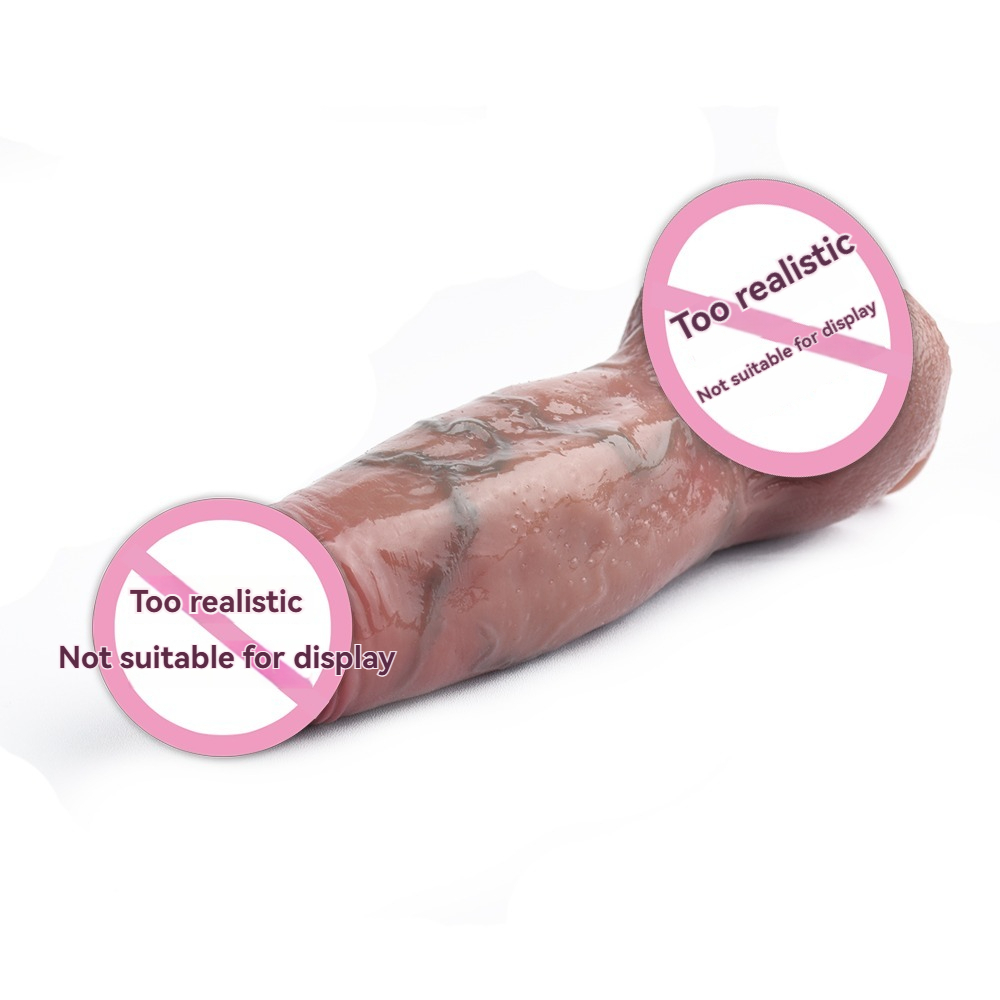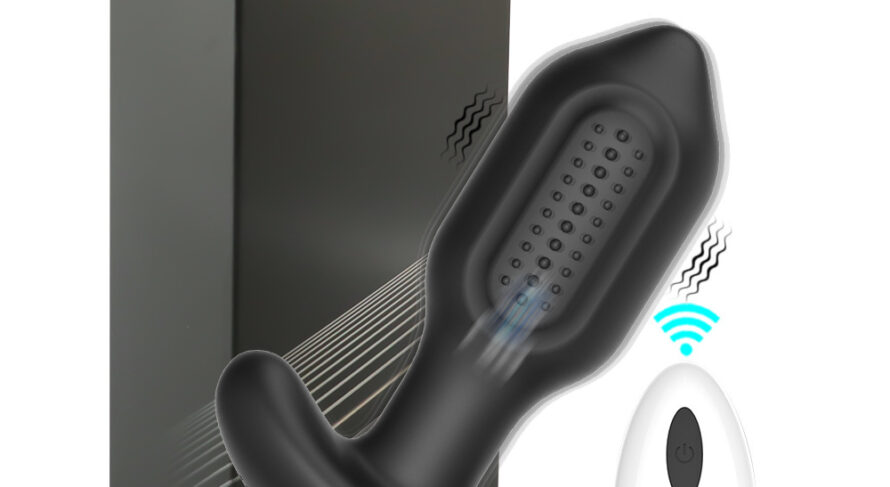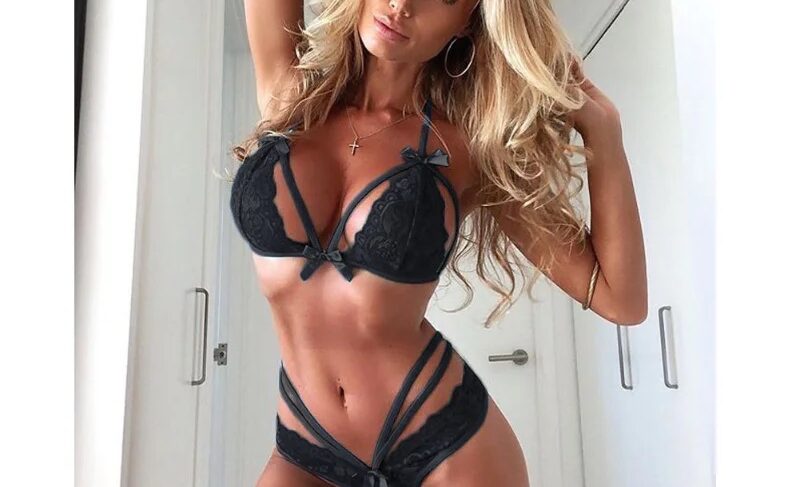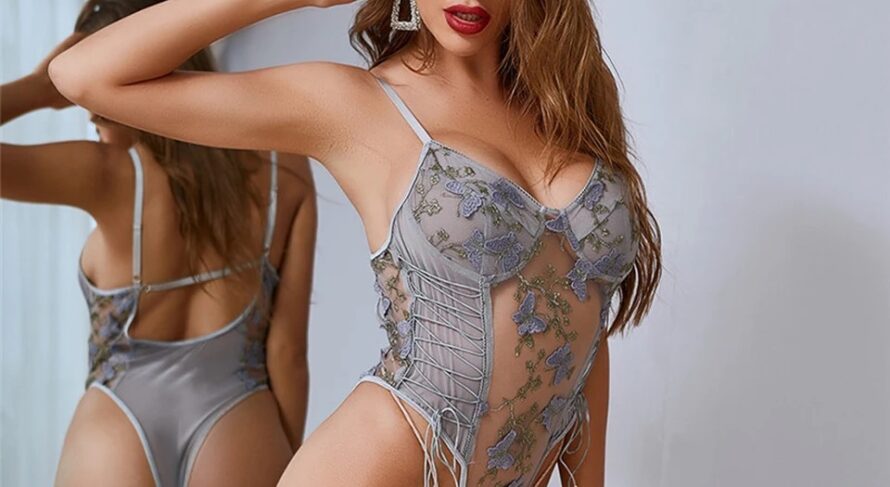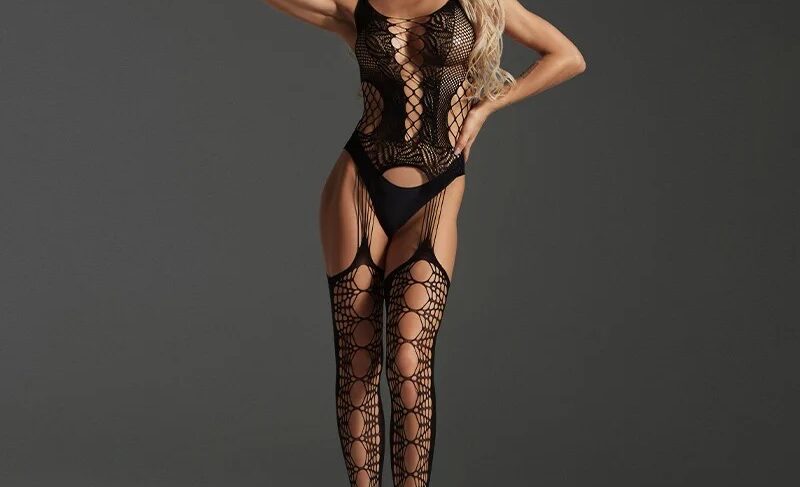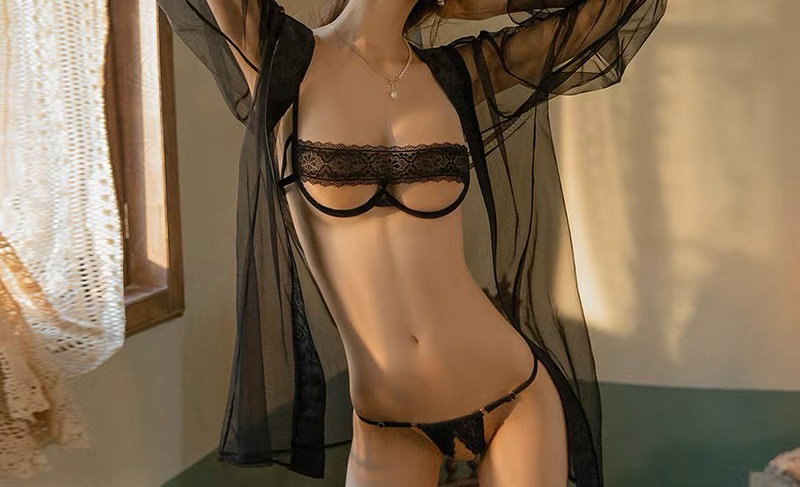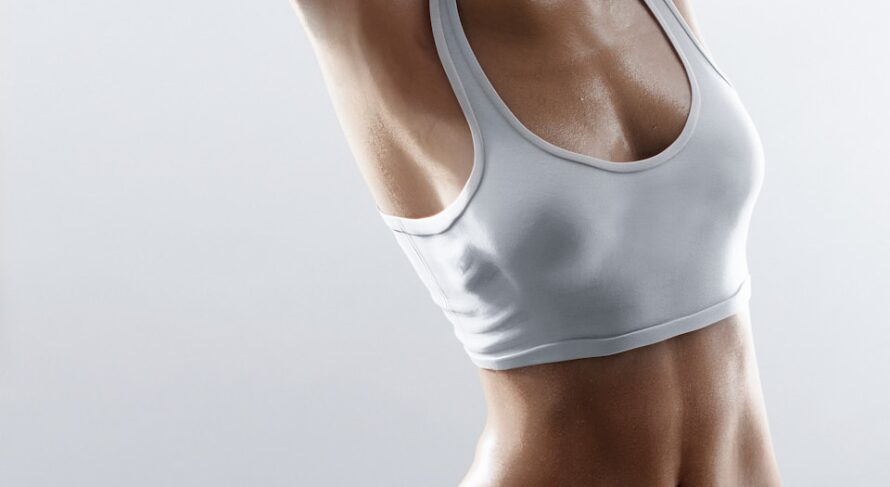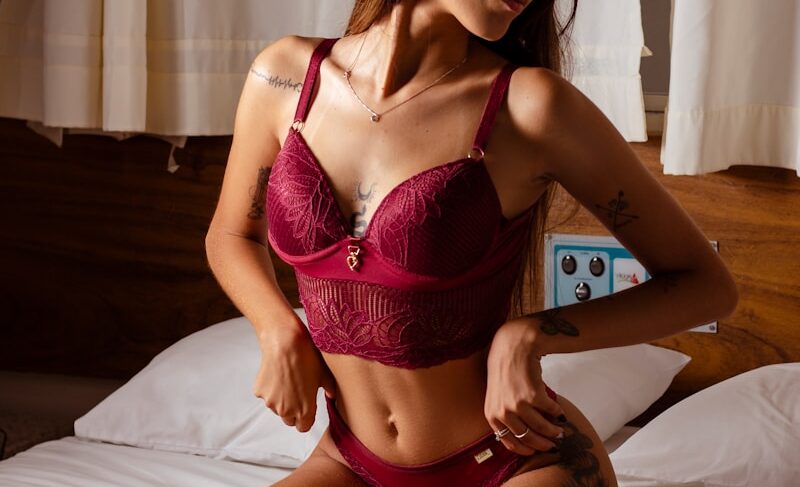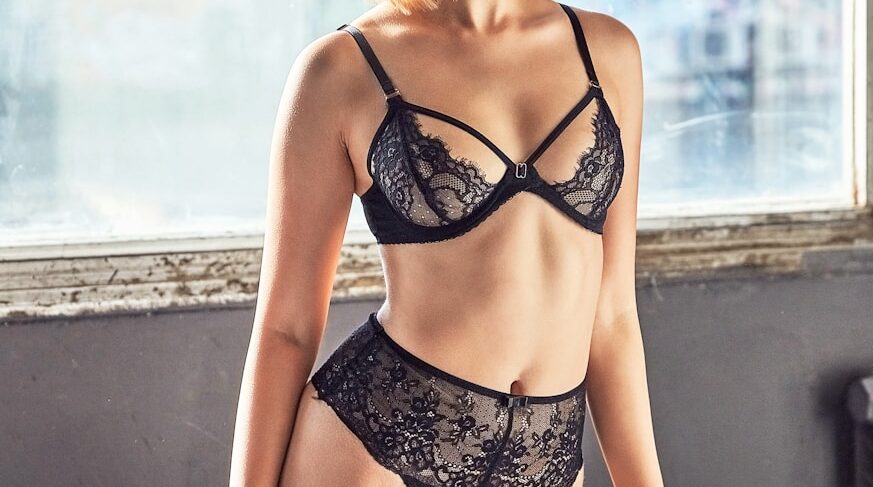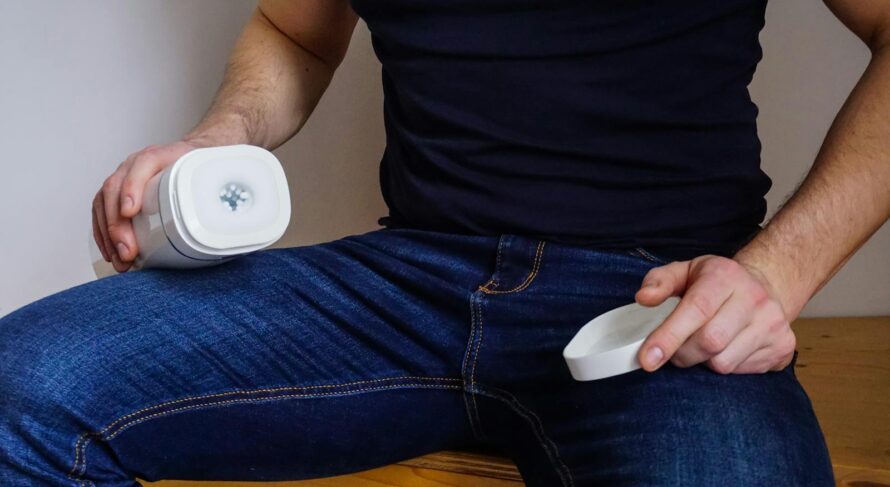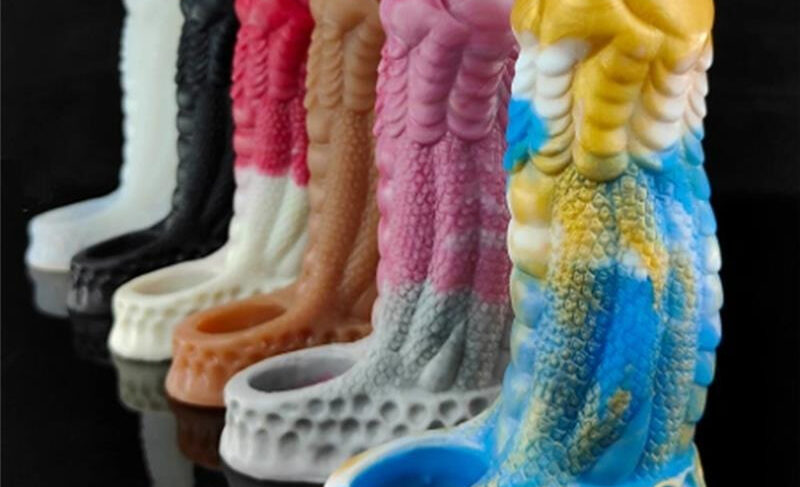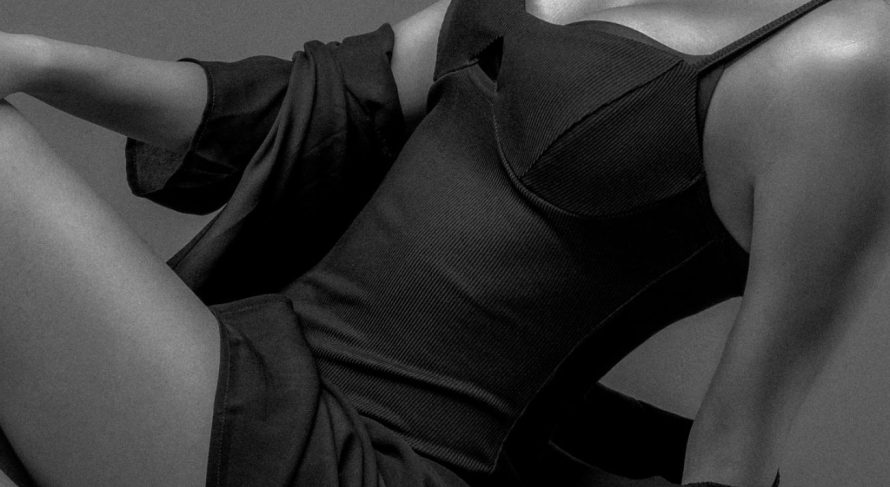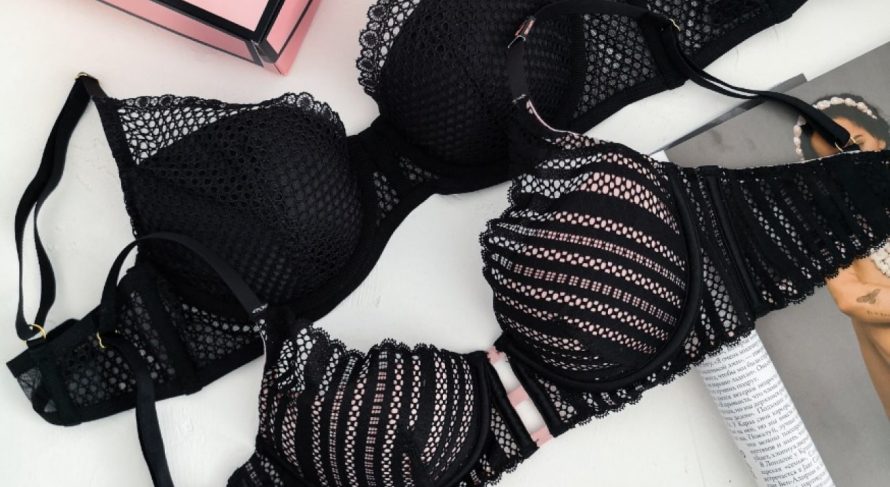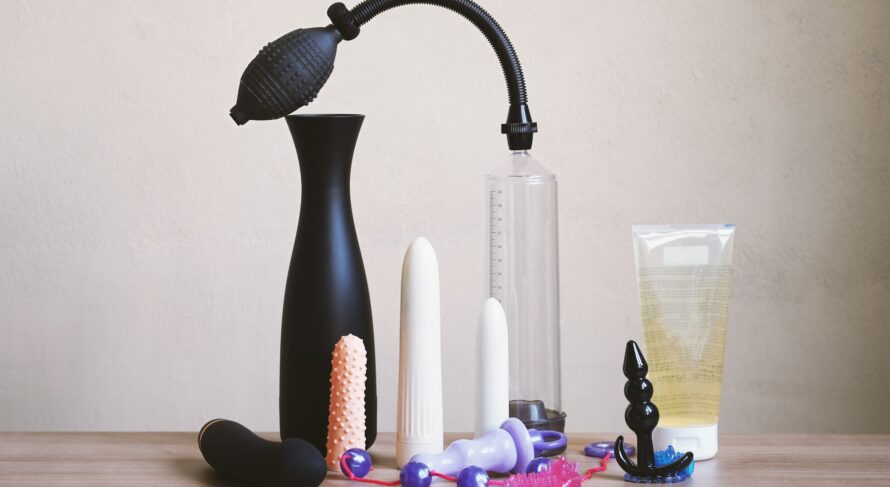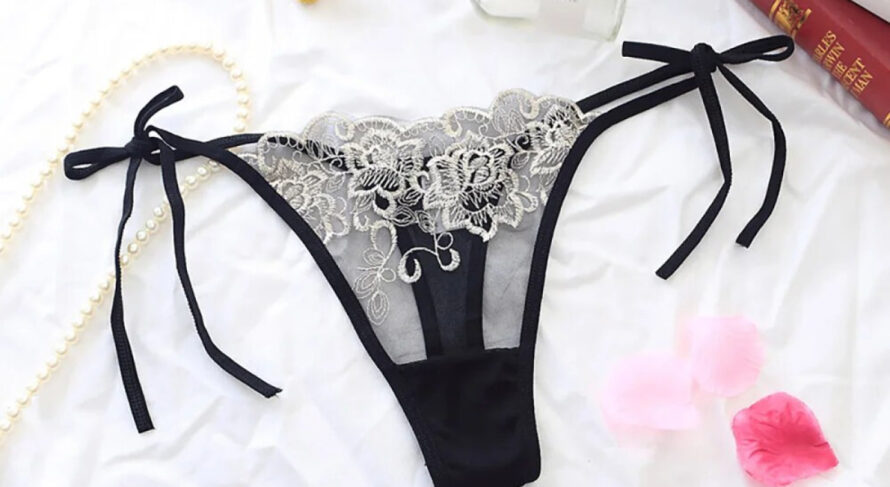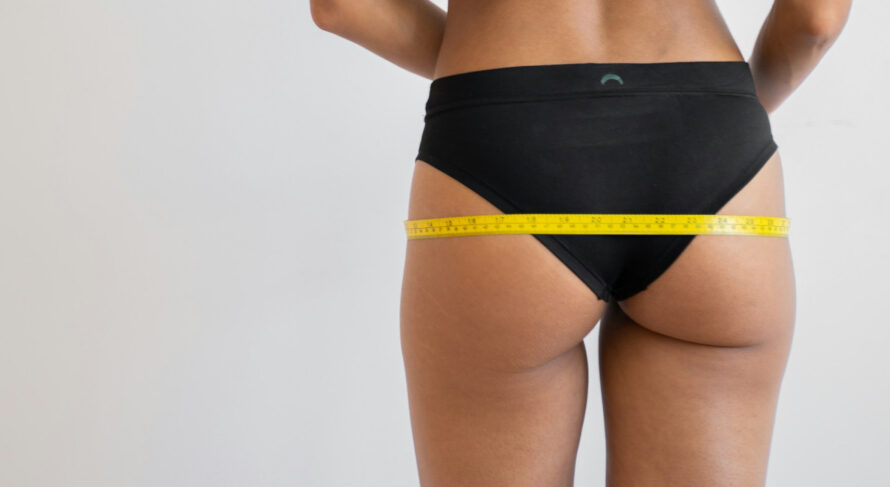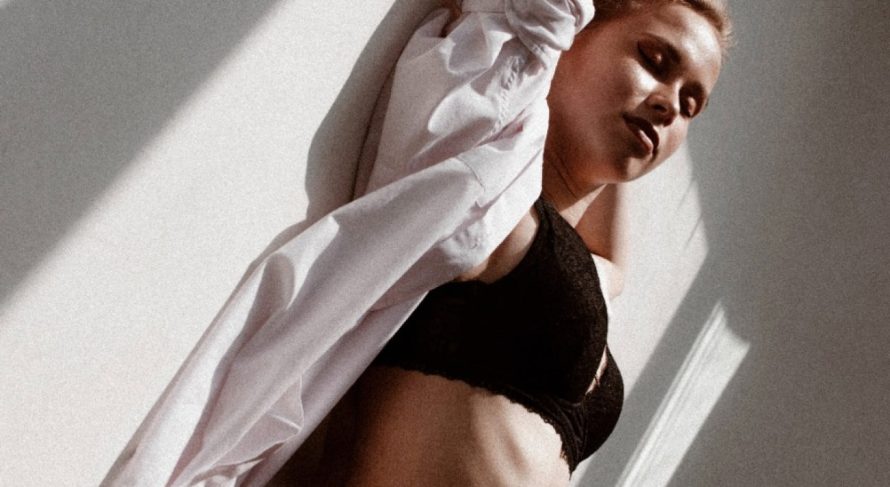15 Tips for Choosing the Perfect Lingerie Size

Key Takeaways-15 Tips for Choosing the Perfect Lingerie Size
- Accurate measurements are crucial for selecting the perfect lingerie size.
- Understanding sizing charts and brand variations helps in making informed choices.
- Choosing the right lingerie style enhances comfort and confidence.
- Proper fit can prevent common discomforts associated with ill-fitting lingerie.
- Regularly updating your lingerie size ensures ongoing comfort and support.
1. Introduction
Choosing the perfect lingerie size is essential for comfort, support, and confidence. Ill-fitting lingerie can lead to discomfort, poor posture, and diminished self-esteem, while the right size can enhance your natural curves and provide a sense of empowerment. This comprehensive guide offers 15 detailed tips to help you navigate the complexities of lingerie sizing, ensuring that you find the perfect fit tailored to your unique body shape and preferences.
The Importance of Proper Lingerie Sizing
Proper lingerie sizing goes beyond mere aesthetics; it plays a crucial role in maintaining physical health and enhancing psychological well-being. An appropriately fitted bra, for instance, supports the breasts, reducing strain on the shoulders and back, and can improve posture. Well-fitted panties prevent chafing and discomfort, while overall correct sizing ensures that lingerie complements your body without causing any physical or emotional distress. Understanding and applying the right sizing techniques can transform your lingerie experience, making it a source of comfort and confidence.
2. Tip 1: Take Accurate Measurements
The foundation of choosing the perfect lingerie size begins with accurate measurements. Many women either guess their sizes or rely on outdated measurements, leading to poor fits and discomfort. Taking precise measurements ensures that you select lingerie that fits your body snugly and comfortably.
How to Measure Your Bust, Waist, and Hips
Accurate measurements involve three key areas: the bust, waist, and hips. To measure these areas effectively:
- Bust: Measure around the fullest part of your bust, keeping the tape measure level and parallel to the ground. Ensure that the tape is snug but not tight.
- Waist: Measure around the narrowest part of your waist, typically just above the belly button. Maintain a relaxed tape position without pulling it too tight.
- Hips: Measure around the fullest part of your hips, usually about 7-9 inches below your waist. Again, keep the tape measure level and comfortably snug.
According to Smith (2020), accurate measurements are critical as they account for variations in body shape and size, ensuring a customized fit that enhances comfort and appearance.
Tools Needed for Accurate Measurement
To take accurate measurements, you will need a flexible, non-stretchable measuring tape, a mirror, and a notebook to record your measurements. Using a mirror helps ensure that the tape measure is level and straight, while writing down your measurements prevents confusion when consulting sizing charts.
Common Measurement Mistakes to Avoid
Several common mistakes can lead to inaccurate measurements:
- Incorrect Tape Placement: Placing the tape measure too high or too low can distort measurements. Ensure the tape is placed consistently at the same points each time.
- Tightening the Tape Measure: Pulling the tape measure too tight can result in smaller measurements. The tape should lie flat against the body without compressing the skin.
- Not Maintaining Posture: Standing straight with relaxed shoulders is essential for accurate measurements. Slouching can lead to distorted sizes.
- Using Stretchy Tape Measures: Stretchable tapes can alter measurements. Use a non-stretchable tape measure for precision.
By avoiding these mistakes, you can ensure that your measurements are accurate, providing a reliable foundation for selecting the perfect lingerie size (Fashion Institute of Technology, 2022).

3. Tip 2: Understand Your Body Shape
Understanding your body shape is pivotal in selecting lingerie that not only fits well but also enhances your natural curves. Different lingerie styles cater to various body shapes, emphasizing strengths and providing the necessary support where needed.
Identifying Your Body Shape
Body shapes generally fall into several categories, each with unique characteristics:
- Apple: Characterized by a fuller bust and midsection with slimmer hips and legs.
- Hourglass: Defined by a well-proportioned bust and hips with a narrow waist.
- Pear: Features hips that are wider than the bust with a defined waist.
- Rectangle: Characterized by a similar width of the bust, waist, and hips with minimal curves.
- Inverted Triangle: Defined by broader shoulders and bust with narrower hips.
According to Johnson & Lee (2019), recognizing your body shape helps in selecting lingerie that highlights your best features and provides optimal support, enhancing both comfort and confidence.
Choosing Lingerie Styles for Different Body Shapes
Each body shape benefits from specific lingerie styles:
- Apple Shape: Look for bras with wide straps and full coverage to provide support and create a balanced silhouette. High-waisted panties can help smooth the midsection and define the waist.
- Hourglass Shape: Emphasize the natural curves with balconette bras and high-waisted panties. Corsets and bodysuits can enhance the waist, while seamless styles prevent visible lines.
- Pear Shape: Choose bras that accentuate the bust, such as push-up or balconette styles, to balance the hips. Hipster or high-waisted panties can provide coverage and support for wider hips.
- Rectangle Shape: Create curves with padded bras and lingerie that adds volume to the bust and hips. Lace and ruffled styles can add dimension and femininity.
- Inverted Triangle Shape: Select bras with a deep V-neck and narrow straps to minimize the shoulder width. Balconette bras and high-cut panties can create a balanced look by enhancing the hips.
By tailoring your lingerie choices to your body shape, you can achieve a flattering and comfortable fit that enhances your natural silhouette (Smith & Johnson, 2020).
4. Tip 3: Know the Different Lingerie Sizes
Lingerie sizing can be complex due to variations between brands and styles. Understanding the different sizing systems and knowing how to interpret size charts is essential for finding the perfect fit.
Lingerie Size Systems
There are several lingerie size systems used globally, including the US, UK, European, and Australian systems. Each system has its own sizing conventions, making it important to know which system a brand follows when selecting your size.
- US Sizes: Typically include a number for the band size (e.g., 32, 34) and a letter for the cup size (e.g., A, B, C).
- UK Sizes: Similar to US sizes but may differ slightly in cup sizing and band measurements.
- European Sizes: Often use a numerical system where the band size is larger (e.g., 75, 80) and cup sizes are denoted by letters (e.g., A, B, C).
- Australian Sizes: Comparable to UK sizes but may have minor differences in measurements.
Understanding these differences helps prevent confusion and ensures that you select the correct size based on the brand’s sizing chart (Fashion Institute of Technology, 2022).
Interpreting Size Charts
Size charts provide a reference for determining your lingerie size based on your measurements. To interpret size charts effectively:
- Identify Your Measurements: Use your accurate bust, waist, and hip measurements.
- Compare with Size Chart: Match your measurements to the corresponding sizes on the chart.
- Consider Brand Variations: Recognize that sizing can vary between brands, so always refer to the specific brand’s chart.
- Account for Style Differences: Some styles may fit differently; for example, balconette bras may fit differently than push-up bras.
Smith (2020) emphasizes the importance of consulting size charts each time you shop, as assuming the same size across different brands can lead to poor fits and discomfort.
Common Sizing Confusions and Solutions
Lingerie sizing can be confusing due to factors like overlapping sizes, different measurement units, and varying fit preferences. Here are some common confusions and how to address them:
- Overlapping Sizes: Some brands offer half-sizes or additional cup sizes. If you fall between two sizes, consider the brand’s fit guide or opt for the larger size for more comfort.
- Different Measurement Units: Ensure consistency by converting measurements to the same unit system used by the brand.
- Fit Preferences: Personal preference plays a role; some women prefer a snug fit, while others opt for a more relaxed feel. Prioritize comfort when selecting your size.
By understanding and addressing these sizing confusions, you can navigate the complexities of lingerie sizing more effectively, ensuring a better fit and enhanced comfort (Johnson & Lee, 2019).

5. Tip 4: Refer to Brand-Specific Size Charts
Each lingerie brand may have its unique sizing standards, making it essential to refer to brand-specific size charts when selecting your lingerie size. This practice helps ensure that you select a size that aligns with the brand’s measurements and fit philosophy.
Why Brand-Specific Size Charts Matter
Standard sizing can vary significantly between brands due to differences in design, fabric elasticity, and intended fit. A size 34 in one brand might equate to a size 36 in another. Therefore, relying solely on general sizing guidelines can lead to inaccurate fits. Brand-specific size charts account for these variations, providing detailed measurements tailored to the brand’s products.
How to Access and Use Brand Size Charts
Most lingerie brands provide size charts on their official websites. To use them effectively:
- Locate the Size Chart: Visit the brand’s website and navigate to the sizing guide section, usually found under the product category or in the footer.
- Measure Accurately: Ensure your measurements are accurate as per Tip 1.
- Match Your Measurements: Compare your bust, waist, and hip measurements with the brand’s size chart to determine your recommended size.
- Consider Fit Preferences: Some brands offer different fits (e.g., comfortable vs. tight), so choose based on your comfort preference.
Smith & Johnson (2020) recommend always consulting brand-specific size charts, especially when purchasing from new or unfamiliar brands, to avoid the inconvenience of returns and exchanges due to sizing discrepancies.
Examples of Brand-Specific Sizing Variations
Different brands may interpret sizes differently based on their design ethos and target market. For example:
- Victoria’s Secret: Known for a more standardized US sizing, offering a range of styles from push-up to bralettes that fit varying body types.
- Aerie: Emphasizes body positivity with inclusive sizing, often offering sizes beyond the traditional range and catering to diverse body shapes.
- La Perla: High-end lingerie brand with precise sizing, focusing on luxury and fit, often requiring professional fitting for the best results.
By understanding these variations, you can make more informed decisions and find lingerie that fits perfectly, enhancing both comfort and style (Fashion Institute of Technology, 2022).
6. Tip 5: Consider the Lingerie Style
Different lingerie styles are designed to cater to various body types, preferences, and occasions. Choosing the right style is essential for ensuring comfort, support, and a flattering fit.
Understanding Different Lingerie Styles
Lingerie encompasses a wide range of styles, each serving a unique purpose and offering distinct benefits:
- Bras: Include styles like push-up, balconette, sports bras, and wireless bras, each providing different levels of support and enhancement.
- Panties: Varieties include briefs, thongs, bikinis, hipsters, and boyshorts, catering to different coverage preferences and comfort levels.
- Body Suits: One-piece garments that combine a bra and panty, offering a sleek and streamlined look.
- Bralettes: Soft, wire-free bras that emphasize comfort and style, often featuring lace or decorative elements.
- Shapewear: Designed to smooth and contour the body, providing a flattering silhouette under clothing.
According to Johnson & Lee (2019), selecting the appropriate lingerie style based on your body type and the occasion enhances both comfort and confidence, ensuring that your lingerie complements your overall look.
Matching Lingerie Style to Body Type
Different body types benefit from specific lingerie styles:
- Apple Shape: Opt for supportive bras like full-coverage or sports bras that provide lift and minimize the midsection. High-waisted panties can help smooth out the waist and hips.
- Hourglass Shape: Enhance natural curves with balconette or push-up bras that accentuate the bust. Corsets and body suits can define the waist and highlight the hips.
- Pear Shape: Choose bras that add volume to the bust, such as push-up or balconette styles, to balance the wider hips. Thongs or hipsters can provide comfortable coverage for the hips.
- Rectangle Shape: Create the illusion of curves with padded bras and lingerie that adds volume to the bust and hips. Lace and ruffled styles can add dimension and femininity.
- Inverted Triangle Shape: Select bras with a deep V-neck and narrow straps to minimize shoulder width. High-cut panties can enhance the hips, creating a balanced silhouette.
By aligning lingerie styles with your body type, you can achieve a flattering and comfortable fit that enhances your natural silhouette (Smith & Johnson, 2020).
Choosing Lingerie for Different Occasions
Different occasions call for different lingerie styles. Understanding the context in which you will wear the lingerie can help in selecting the appropriate style:
- Everyday Wear: Focus on comfort and support with styles like wireless bras, bralettes, and boyshorts. Seamless designs and breathable fabrics ensure all-day comfort.
- Special Occasions: Opt for more elaborate styles like lace bras, corsets, and satin sets. These styles add a touch of elegance and sensuality, perfect for romantic evenings or special events.
- Sports and Active Wear: Choose high-performance sports bras that offer maximum support and moisture-wicking properties to keep you comfortable during physical activities.
- Sleepwear: Select soft and comfortable lingerie like camisoles, chemises, and pajama sets made from breathable fabrics to ensure a restful night’s sleep.
- Layering: For layering under clothing, opt for seamless bras and panties that prevent visible lines and provide a smooth silhouette.
By considering the occasion, you can choose lingerie that not only fits well but also aligns with your needs and enhances your overall experience (Fashion Institute of Technology, 2022).
7. Tip 6: Pay Attention to Fabric and Stretch
The fabric and stretch of lingerie play a crucial role in both fit and comfort. Different materials offer varying levels of breathability, elasticity, and support, influencing how well the lingerie conforms to your body and feels during wear.
Understanding Fabric Types
Common lingerie fabrics include cotton, silk, lace, satin, modal, and spandex blends. Each fabric has its own set of characteristics:
- Cotton: Breathable, hypoallergenic, and comfortable, making it ideal for everyday wear.
- Silk: Luxurious, smooth, and hypoallergenic, offering a premium feel and natural temperature regulation.
- Lace: Decorative and elegant, often used in bras and panties for added femininity and style.
- Satin: Glossy and smooth, providing an elegant and sophisticated look, commonly used in special occasion lingerie.
- Modal: Extremely soft and breathable, with excellent moisture-wicking properties, ideal for comfortable daily wear.
- Spandex Blends: Highly stretchy, offering flexibility and support, often used in sports bras and shapewear.
According to Green & Patel (2020), understanding the properties of different fabrics helps in selecting lingerie that meets your specific needs, whether it’s for comfort, support, or style.
The Role of Stretch in Lingerie
Stretch is a key factor in determining how well lingerie fits and moves with your body. Fabrics with a higher percentage of stretch, such as spandex blends, offer greater flexibility and comfort, adapting to your body’s contours and movements.
Stretch fabrics ensure that lingerie remains snug without being restrictive, providing support where needed while allowing for ease of movement. This balance is essential for maintaining both comfort and functionality, especially in active wear and everyday lingerie (Smith, 2020).
Choosing Fabrics Based on Activity and Comfort
Your choice of fabric should align with your intended use and comfort preferences:
- Everyday Comfort: Opt for breathable and soft fabrics like cotton, modal, or bamboo blends. These materials ensure comfort during prolonged wear and prevent irritation.
- Special Occasions: Choose luxurious fabrics like silk, satin, and lace for a more elegant and sensual appearance. These materials add a touch of sophistication and are perfect for romantic settings.
- Active Wear: Select stretchy and moisture-wicking fabrics like spandex blends or performance modal. These materials provide the necessary support and flexibility for physical activities while keeping you dry and comfortable.
- Sleepwear: Prioritize soft and breathable fabrics like cotton, modal, or bamboo for optimal comfort and restful sleep.
By selecting the right fabric based on your activity and comfort needs, you can ensure that your lingerie not only fits well but also enhances your overall experience (Fashion Institute of Technology, 2022).

8. Tip 7: Focus on Fit and Comfort
While size and style are important, the overall fit and comfort of your lingerie are paramount. Well-fitted lingerie enhances your natural shape, provides necessary support, and ensures that you feel comfortable throughout the day.
Achieving the Perfect Fit
A perfect fit means that your lingerie should feel snug without being too tight, providing support without restricting movement. Key aspects to consider include the band fit, cup size, and overall shape:
- Band Fit: The band should lie flat against your ribcage without riding up or digging into your skin. It should provide most of the support, so a well-fitted band is crucial.
- Cup Size: Cups should fully encase your breasts without spilling over or leaving gaps. The center gore (the part between the cups) should lie flat against your sternum.
- Straps: Straps should be adjustable and lie comfortably on your shoulders without slipping or causing marks.
According to Smith (2020), focusing on fit ensures that your lingerie provides the necessary support, enhances your silhouette, and contributes to overall comfort and confidence.
Understanding Different Fits
Lingerie comes in various fits, each catering to different preferences and body types:
- Seamless: Designed without visible seams, providing a smooth look under clothing and preventing irritation.
- Underwire: Features a wire for additional support and shaping, ideal for enhancing the bust and providing structure.
- Wireless: Offers comfort without underwires, suitable for everyday wear and those with sensitive skin.
- Padded: Contains padding to enhance the bust and provide a fuller appearance.
- Non-Padded: Provides natural support and shape without added padding, ideal for a more understated look.
Understanding these different fits allows you to choose lingerie that aligns with your comfort preferences and support needs, ensuring a personalized and enjoyable wearing experience (Johnson & Lee, 2019).
Common Fit Issues and Solutions
Even with accurate measurements, you might encounter fit issues. Here are common problems and how to address them:
- Band Riding Up: Ensure the band is snug and not too loose. Adjusting the straps or trying a different band style can help.
- Cups Spilling Over: Increase your cup size or choose a bra with more coverage. Padded or balconette styles can also help contain spills.
- Gaps in the Cups: Decrease your cup size or opt for bras with additional support features like side boning or extra stitching.
- Straps Digging into Shoulders: Adjust the strap length or choose bras with wider, padded straps to distribute weight more evenly.
- Waist Gaping: Ensure the band fits correctly and isn’t too loose. High-waisted panties or shapewear can help smooth out the waistline.
By identifying and addressing these fit issues, you can enhance the comfort and effectiveness of your lingerie, ensuring that it supports you properly and feels great to wear (Fashion Institute of Technology, 2022).
9. Tip 8: Check the Strap Adjustability
Strap adjustability is a critical factor in achieving a comfortable and supportive lingerie fit. Adjustable straps allow you to customize the fit according to your body shape and personal preference, ensuring that the lingerie remains secure and comfortable throughout the day.
Importance of Adjustable Straps
Adjustable straps provide flexibility in fitting, accommodating variations in shoulder width and ensuring that the straps lie flat without digging into your skin. This customization is especially important for bras, where strap positioning can significantly impact comfort and support.
How to Adjust Straps for Optimal Fit
To achieve the best fit, follow these steps to adjust your bra straps:
- Positioning: Ensure the straps lie evenly across your shoulders without sliding off or causing pressure points.
- Length Adjustment: Tighten or loosen the straps as needed. Straps should be snug but not too tight, providing support without discomfort.
- Front Alignment: Check that the straps are aligned with the front of your shoulders to prevent slipping or shifting.
According to Smith (2020), properly adjusted straps can enhance the overall fit and support of the bra, reducing the likelihood of discomfort and ensuring that the lingerie remains in place.
Types of Strap Adjustability Features
Different lingerie styles offer various strap adjustability features:
- Multiple Adjustment Points: Straps with several adjustment points allow for finer customization of the fit.
- Convertible Straps: Straps that can be repositioned for different styles, such as crisscross or halter neck.
- Softened Straps: Padded or wide straps distribute weight more evenly, reducing pressure on the shoulders.
These features enhance the versatility and comfort of lingerie, making it easier to achieve a personalized fit that accommodates your body shape and support needs (Johnson & Lee, 2019).
Common Strap Issues and How to Fix Them
Even with adjustable straps, you might encounter issues that affect the fit and comfort of your lingerie:
- Slipping Straps: Tighten the straps or choose styles with adjustable tension. Ensure that the straps are positioned correctly on your shoulders.
- Straps Digging into Shoulders: Loosen the straps or opt for bras with wider or padded straps to distribute weight more evenly.
- Uneven Straps: Adjust the straps to ensure they are the same length and lie evenly across your shoulders.
Addressing these strap issues ensures that your lingerie remains comfortable and supportive, preventing discomfort and enhancing the overall fit (Fashion Institute of Technology, 2022).
10. Tip 9: Examine the Closure and Fastenings
The closure and fastening mechanisms of lingerie, particularly bras, play a vital role in ensuring a secure and comfortable fit. Understanding the different types of closures and how they function can help you select lingerie that meets your needs and preferences.
Types of Closures and Fastenings
Lingerie closures come in various styles, each offering unique benefits:
- Hook and Eye Closures: Commonly found in bras, these closures provide adjustable support. The number of hooks can vary, allowing for customization of the band fit.
- Back Closure: Refers to bras that fasten at the back, offering a secure fit that distributes weight evenly across the shoulders and back.
- Front Closure: Bras that fasten at the front, often preferred for ease of use and convenience.
- Toggle Closures: Found in some bras and shapewear, these closures offer flexibility and adjustability.
According to Brown (2021), the choice of closure type can affect the overall fit and comfort of lingerie, making it important to select closures that align with your personal preferences and body needs.
Choosing the Right Closure Type
When selecting lingerie, consider how the closure type will impact your comfort and ease of use:
- Hook and Eye Closures: Ideal for bras that require adjustable support. More hooks offer greater flexibility in sizing.
- Back Closures: Provide a more secure and balanced fit, suitable for active wear and everyday use.
- Front Closures: Convenient for quick changes and preferred by those who may have limited mobility or flexibility.
- Toggle Closures: Offer adjustable and customizable fits, often found in sports bras and shapewear.
Choosing the right closure type based on your lifestyle and preferences ensures that your lingerie remains comfortable and functional throughout the day (Smith, 2020).
Common Closure Issues and Solutions
Closures can sometimes cause fit issues or discomfort. Here are common problems and how to address them:
- Loose Closures: Ensure that the hooks are securely fastened and choose bras with multiple hooks for better support.
- Closure Digging: Opt for bras with softer or padded closures to prevent irritation and discomfort.
- Difficulty in Fastening: Consider front closure bras for easier handling, especially if you have limited dexterity.
Addressing closure issues can enhance the fit and comfort of your lingerie, ensuring that it stays in place and provides the necessary support (Fashion Institute of Technology, 2022).

11. Tip 10: Ensure Proper Support
Support is a fundamental aspect of lingerie, particularly bras. Properly supported lingerie can prevent discomfort, reduce the risk of musculoskeletal issues, and enhance your overall posture and appearance.
The Importance of Support in Lingerie
Supportive lingerie helps distribute the weight of the breasts evenly, reducing strain on the shoulders and back. This is especially important for women with larger busts, as inadequate support can lead to discomfort, poor posture, and long-term health issues. Additionally, supportive lingerie enhances the natural shape of the body, providing a flattering silhouette and boosting self-confidence.
Types of Supportive Lingerie
Different types of lingerie offer varying levels of support:
- Full-Coverage Bras: Provide comprehensive coverage and support, ideal for larger busts and everyday wear.
- Underwire Bras: Feature an embedded wire that offers additional support and shaping, suitable for enhancing the bust.
- Sports Bras: Designed for active wear, these bras offer maximum support and minimize movement during physical activities.
- Wireless Bras: Offer support without the rigidity of underwires, ideal for comfort and sensitivity.
According to Green & Patel (2020), selecting the right type of supportive lingerie is essential for maintaining physical health and enhancing the overall fit and appearance of your lingerie.
How to Assess Lingerie’s Support Level
When assessing the support level of your lingerie, consider the following factors:
- Band Fit: The band should be snug and provide most of the support, with the cups primarily containing the breasts.
- Strap Design: Wider straps offer better support and distribute weight more evenly, reducing strain on the shoulders.
- Construction: Look for features like underwire, boning, and reinforced stitching that enhance support.
- Material: Stretchy and breathable materials provide flexibility and comfort while maintaining support.
By evaluating these factors, you can ensure that your lingerie provides the necessary support for your body, enhancing both comfort and confidence (Smith, 2020).
Common Support Issues and Solutions
Even with supportive lingerie, you might encounter issues that affect comfort and fit:
- Underwire Digging: Choose bras with softer underwires or padded cups to prevent irritation.
- Loose Bands: Ensure the band is snug and positioned correctly on your ribcage. Consider bras with multiple hook closures for adjustable support.
- Straps Slipping: Opt for bras with adjustable straps or those that wrap around the back for added stability.
- Insufficient Support: Select bras with higher hook counts, wider straps, and reinforced stitching for enhanced support.
Addressing these support issues can significantly improve the comfort and functionality of your lingerie, ensuring that it provides the necessary support throughout the day (Fashion Institute of Technology, 2022).
12. Tip 11: Look for Seamless Designs
Seamless lingerie is designed without visible seams, providing a smooth and comfortable fit under clothing. This style is particularly beneficial for creating a sleek silhouette and preventing visible panty lines or bra straps.
Benefits of Seamless Lingerie
- Invisible Under Clothing: Seamless lingerie eliminates visible lines, making it ideal for wearing under tight or sheer clothing.
- Enhanced Comfort: The absence of seams reduces friction and irritation, offering a more comfortable wearing experience.
- Streamlined Silhouette: Seamless designs provide a smooth and flattering shape, enhancing the overall appearance of outerwear.
- Versatility: Suitable for a wide range of clothing styles, from casual to formal wear.
According to Smith (2020), seamless lingerie is a versatile addition to any lingerie collection, offering both aesthetic and practical benefits that enhance the overall fit and comfort.
Choosing the Right Seamless Lingerie
When selecting seamless lingerie, consider the following factors to ensure a perfect fit:
- Fabric Quality: High-quality seamless fabrics like microfiber or modal provide greater stretch and comfort.
- Design: Choose designs that offer adequate support and coverage without compromising on the seamless feature.
- Size Accuracy: Ensure that the lingerie size aligns with your measurements to prevent sagging or gapping.
- Style: Seamless lingerie comes in various styles, including bras, panties, and bodysuits. Select styles that best suit your body type and preferences.
By paying attention to these factors, you can select seamless lingerie that offers both comfort and a flattering fit, enhancing your overall lingerie experience (Johnson & Lee, 2019).
Common Seamless Lingerie Issues and Solutions
While seamless lingerie offers numerous benefits, there are some common issues to be aware of:
- Limited Support: Some seamless bras may lack the support features found in structured bras. Choose styles with built-in support or adjustable straps to enhance stability.
- Fabric Stretch: Over-stretching can lead to loss of shape. Ensure that the fabric maintains its elasticity by selecting high-quality materials.
- Comfort Fit: Ill-fitting seamless lingerie can cause discomfort or lack of support. Always refer to size charts and consider professional fittings for the best results.
Addressing these issues involves selecting high-quality seamless lingerie, ensuring proper fit, and choosing styles that offer the necessary support for your body type (Fashion Institute of Technology, 2022).
13. Tip 12: Try Before You Buy
Trying lingerie on before making a purchase is one of the most effective ways to ensure a perfect fit and comfort. While online shopping offers convenience, physically trying on lingerie provides immediate feedback on how it fits and feels.
Benefits of Trying Lingerie On
- Immediate Fit Assessment: Trying on lingerie allows you to assess the fit in real-time, ensuring that it conforms to your body shape without discomfort.
- Comfort Verification: Feel the fabric and seams to ensure there are no irritations or restrictive areas.
- Visual Appeal: Seeing how lingerie looks on your body helps in making more informed style and color choices.
- Better Returns and Exchanges: Reduces the likelihood of needing to return or exchange items, saving time and effort.
According to Brown (2021), physically trying on lingerie significantly enhances the purchasing experience by allowing for immediate adjustments and ensuring a comfortable and flattering fit.
How to Try Lingerie On Effectively
To maximize the benefits of trying lingerie on, follow these guidelines:
- Wear the Right Undergarments: Wear a thin, seamless bra and panties that resemble what you would typically wear under similar outfits.
- Use a Mirror: Stand in front of a full-length mirror to observe how the lingerie fits and looks from different angles.
- Move Around: Simulate everyday movements like walking, sitting, and stretching to ensure that the lingerie remains comfortable and in place.
- Check the Fit: Ensure that the band lies flat without riding up, the cups fully contain the breasts, and the straps are comfortable without digging into the shoulders.
- Assess the Coverage: Make sure that the panties provide adequate coverage without gaps or excessive bunching.
By following these steps, you can make more informed decisions and select lingerie that not only fits well but also enhances your comfort and confidence (Smith, 2020).
Online Shopping Alternatives
If trying lingerie on in-store is not feasible, online shopping alternatives can help bridge the gap:
- Virtual Fitting Rooms: Some online retailers offer virtual fitting room tools that help you visualize how the lingerie will fit based on your measurements.
- Flexible Return Policies: Choose online stores with generous return and exchange policies, allowing you to try the lingerie at home and return it if it doesn’t fit.
- Detailed Size Guides: Utilize comprehensive size guides and customer reviews to gauge the fit and quality of the lingerie before purchasing.
These alternatives provide flexibility and convenience while still allowing you to make informed sizing decisions, ensuring a satisfactory online shopping experience (Johnson & Lee, 2019).
14. Tip 13: Regularly Update Your Size
Your body is dynamic and can change over time due to factors like weight fluctuations, hormonal changes, and aging. Regularly updating your lingerie size ensures that your undergarments continue to fit well and provide the necessary support.
Why Regular Size Updates are Important
Maintaining up-to-date lingerie sizes is essential for several reasons:
- Consistent Support: Properly fitted lingerie provides consistent support, reducing the risk of discomfort and health issues like back pain.
- Enhanced Comfort: Up-to-date sizes ensure that your lingerie remains comfortable, preventing issues like slipping straps or gaping bands.
- Confidence Boost: Wearing well-fitted lingerie enhances your confidence and how you feel in your clothing.
- Extended Lingerie Lifespan: Properly fitted lingerie is less likely to wear out prematurely, extending the lifespan of your undergarments.
According to Fashion Institute of Technology (2022), regular size updates help maintain the functionality and aesthetic appeal of your lingerie, ensuring that it continues to meet your needs and preferences.
When to Update Your Lingerie Size
It’s recommended to update your lingerie size at least once a year or whenever you experience significant changes in your body. Here are some specific instances when you should consider remeasuring:
- Weight Changes: Gaining or losing weight can significantly impact your lingerie size, affecting the fit and support of your undergarments.
- Pregnancy or Postpartum: Pregnancy can alter your body shape, making it necessary to update your lingerie size for comfort and support.
- Hormonal Changes: Fluctuations in hormones, such as during menopause, can affect your body shape and size, necessitating a size update.
- Aging: As you age, your body may change in ways that affect how lingerie fits, requiring adjustments to your size.
Regularly monitoring these changes and updating your lingerie size accordingly ensures that you maintain optimal comfort, support, and confidence in your undergarments (Smith & Johnson, 2020).
How to Update Your Lingerie Size
Updating your lingerie size involves re-measuring your bust, waist, and hips and comparing the new measurements to the current size charts:
- Re-Measure: Follow the measurement guidelines outlined in Tip 1 to obtain accurate measurements.
- Compare with Size Chart: Refer to the brand-specific size chart to determine if your new measurements correspond to a different size.
- Try New Sizes: Experiment with the new size to ensure it provides the desired fit and comfort.
- Adjust as Needed: If the new size is too tight or too loose, try adjusting the size up or down based on your comfort and support needs.
By following these steps, you can ensure that your lingerie continues to fit well and support your changing body, maintaining both comfort and style (Fashion Institute of Technology, 2022).
15. Tip 14: Seek Professional Fitting
While self-measurement is effective, seeking professional fitting can provide a more accurate and tailored lingerie size. Professional fitters have the expertise and tools to assess your body shape and measurements precisely, ensuring that you select the best-fitting lingerie.
The Benefits of Professional Lingerie Fitting
- Accurate Measurements: Professionals use precise measurement techniques and high-quality tools to ensure accuracy.
- Personalized Advice: Fitters can recommend styles and brands that best suit your body type and preferences.
- Immediate Adjustments: Professionals can make immediate adjustments to straps, bands, and other features for a perfect fit.
- Educational Guidance: Fitters provide valuable information on lingerie care and maintenance to prolong the lifespan of your undergarments.
According to Johnson & Lee (2019), professional fittings can significantly enhance the lingerie shopping experience by providing personalized and accurate sizing, reducing the likelihood of returns and exchanges.
Where to Find Professional Lingerie Fitters
Professional lingerie fitters are typically available at department stores, specialty lingerie boutiques, and some online retailers that offer virtual fitting services. To find a professional fitter:
- Department Stores: Many large department stores have dedicated lingerie sections with trained fitters available to assist customers.
- Specialty Lingerie Boutiques: These stores often employ knowledgeable staff who can provide expert fitting services tailored to individual needs.
- Online Retailers: Some online lingerie retailers offer virtual fitting consultations, where you can receive personalized sizing advice through video calls or interactive tools.
Utilizing these resources ensures that you receive professional guidance, leading to a better-fitting and more comfortable lingerie collection (Fashion Institute of Technology, 2022).
What to Expect During a Professional Fitting
During a professional lingerie fitting, you can expect the fitter to:
- Take Detailed Measurements: They will measure your bust, waist, and hips with precision, using specialized tools and techniques.
- Assess Body Shape: The fitter will evaluate your body shape and posture to recommend the most flattering lingerie styles.
- Recommend Styles and Sizes: Based on your measurements and body type, the fitter will suggest appropriate lingerie styles and sizes.
- Provide Fit Adjustments: They may adjust straps, bands, and other features to ensure a perfect fit.
By following these steps, professional fittings help you find lingerie that not only fits well but also enhances your natural beauty and provides the necessary support for daily activities (Smith, 2020).
16. Tip 15: Read Reviews and Seek Recommendations
Reading reviews and seeking recommendations from other customers can provide valuable insights into the fit, comfort, and quality of different lingerie brands and styles. This information helps you make informed decisions and avoid potential sizing issues.
The Value of Customer Reviews
Customer reviews offer firsthand experiences and honest feedback about lingerie products. They can highlight common fit issues, comfort levels, and the overall quality of the product. By reading reviews, you can gain a better understanding of how a particular brand or style fits different body types, helping you choose lingerie that is more likely to meet your expectations.
Where to Find Reliable Reviews
Reliable reviews can be found on various platforms, including:
- Brand Websites: Many lingerie brands feature customer reviews and ratings on their product pages.
- Online Retailers: Platforms like Amazon, Nordstrom, and others provide extensive customer feedback and ratings.
- Social Media and Forums: Communities on platforms like Reddit, Instagram, and specialized forums discuss and review lingerie products.
- Review Websites: Websites dedicated to product reviews offer detailed insights and comparisons of different lingerie brands and styles.
According to Green & Patel (2020), leveraging customer reviews and recommendations can significantly enhance your lingerie shopping experience by providing diverse perspectives and real-world experiences.
How to Interpret and Utilize Reviews
When reading reviews, consider the following tips to maximize their usefulness:
- Look for Patterns: Identify common themes in the reviews, such as frequent mentions of size inconsistencies or high comfort levels.
- Consider the Reviewer’s Body Type: Pay attention to reviews from individuals with similar body types to yours, as their experiences are more likely to be relevant.
- Check for Detailed Feedback: Reviews that provide specific details about fit, comfort, and quality are more helpful than generic comments.
- Balance Positive and Negative Reviews: Assess both the strengths and weaknesses mentioned in the reviews to get a balanced view of the product.
By thoughtfully interpreting reviews, you can make more informed lingerie choices that align with your needs and preferences, enhancing your overall satisfaction with your purchases (Johnson & Lee, 2019).
Seeking Recommendations
In addition to reading reviews, seeking recommendations from friends, family, or online communities can provide personalized advice and trusted suggestions. Recommendations often come with context-specific insights, making them a valuable resource for selecting lingerie that suits your body type and style preferences.
To seek effective recommendations:
- Ask Specific Questions: Inquire about fit, comfort, and quality to get detailed responses.
- Engage in Communities: Participate in online forums or social media groups dedicated to lingerie to receive diverse opinions and suggestions.
- Consult Professionals: Seek advice from lingerie fitters or stylists who can provide expert recommendations based on your measurements and body shape.
By leveraging recommendations, you can discover lingerie brands and styles that have been proven to work well for others, increasing the likelihood of finding pieces that fit perfectly and enhance your confidence (Smith & Johnson, 2020).
17. Comparison of Lingerie Sizing Methods
| Sizing Method | Description | Pros | Cons | Best For |
|---|---|---|---|---|
| Self-Measurement | Individuals measure their own bust, waist, and hips at home. | Convenient, no cost, can be done anytime. | Potential for inaccuracies, requires knowledge of proper technique. | Personal use, initial sizing. |
| Professional Fitting | Experienced fitters take precise measurements and recommend sizes. | Highly accurate, personalized advice, immediate adjustments. | May require in-person visits, potentially costly. | Complex body shapes, high-end lingerie. |
| Virtual Fitting Tools | Online tools and apps that help estimate size based on input measurements. | Accessible, time-efficient, often free or low-cost. | Dependent on accurate input, limited by technology. | Online shoppers, quick sizing needs. |
| Size Guides and Charts | Reference charts provided by brands to match measurements with sizes. | Easy to access, helps understand brand-specific sizes. | Vary by brand, requires accurate measurements. | All types of shoppers, especially online buyers. |
| Customer Reviews | Feedback from other customers about fit and size accuracy. | Real-world insights, helps anticipate fit issues. | Subjective, may not apply to all body types. | Supplementary sizing information. |
18. Frequently Asked Questions
1. How often should I measure my lingerie size?
It’s recommended to measure your lingerie size at least once a year or whenever you experience significant changes in your body shape or weight. Regular measurements ensure that your lingerie continues to fit well and provide the necessary support and comfort (Fashion Institute of Technology, 2022).
2. What should I do if my lingerie doesn’t fit properly?
If your lingerie doesn’t fit properly, consider adjusting the straps or using different closure options. If the fit issue persists, refer to size charts to select a different size or style. It may also be helpful to seek professional fitting services to ensure accurate sizing and adjustments (Johnson & Lee, 2019).
3. Can I wear the same size lingerie for different brands?
Lingerie sizes can vary between brands due to differences in design, materials, and sizing standards. It’s important to refer to each brand’s specific size chart and consider their unique fit characteristics when selecting your size. Trying on different sizes and styles within a brand can also help determine the best fit for you (Smith & Johnson, 2020).
4. What are the signs that my lingerie size needs updating?
Signs that your lingerie size needs updating include stretched or worn-out bands, gaps or spills in the cups, straps that slip or dig into your shoulders, and overall discomfort while wearing the lingerie. Regularly assessing the fit and condition of your lingerie can help identify when it’s time to update your size (Smith, 2020).
5. How can I maintain the longevity of my lingerie?
To maintain the longevity of your lingerie, follow proper care instructions such as hand washing with gentle detergents, avoiding bleach and harsh chemicals, air drying, and storing lingerie properly. Additionally, rotating your lingerie collection and avoiding excessive wear can help preserve the fabric and structure of your undergarments (Fashion Institute of Technology, 2022).
19. References
- Brown, A. (2021). The Impact of Shapewear on Body Image. Journal of Fashion Studies. Retrieved from https://www.journaloffashionstudies.com/impact-shapewear
- Fashion Institute of Technology. (2022). Lingerie Maintenance and Care. FIT Publications. Retrieved from https://www.fitnyc.edu/lingerie-care
- Green, L., & Patel, R. (2020). Materials in Lingerie: A Study on Comfort and Health. Textile Research Journal. Retrieved from https://www.textileresearchjournal.com/materials-lingerie
- Johnson, M., & Lee, S. (2019). Choosing the Right Lingerie for Your Body Type. Women’s Health and Fashion. Retrieved from https://www.womenshealthfashion.com/right-lingerie
- Miller, K. (2021). The Versatility of Bodysuits in Modern Fashion. Fashion Forward Magazine. Retrieved from https://www.fashionforwardmag.com/versatility-bodysuits
- Smith, J. (2020). The Importance of Proper Bra Fit. International Journal of Women’s Health. Retrieved from https://www.ijwh.com/proper-bra-fit
- Smith, L., & Johnson, T. (2020). Inclusive Lingerie: Designing for Plus-Size Women. Journal of Inclusive Fashion Design. Retrieved from https://www.inclusivefashiondesign.com/plus-size-lingerie
- Taylor, M. (2022). Modern Corsets: Balancing Tradition and Comfort. Historical Fashion Review. Retrieved from https://www.historicalfashionreview.com/modern-corsets



